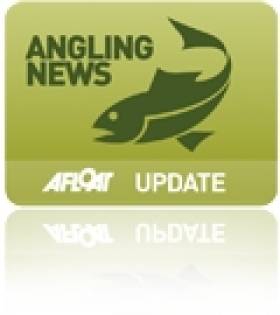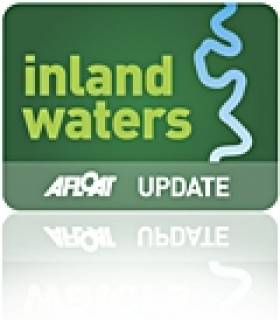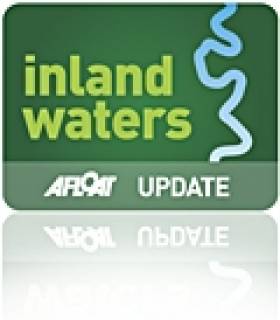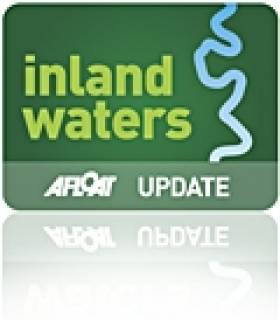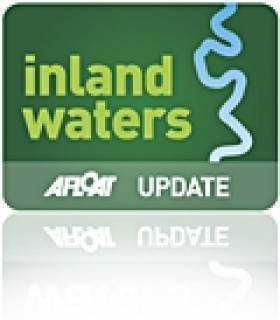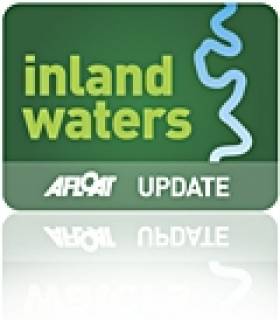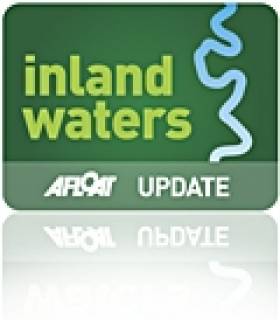Displaying items by tag: inland waterways
Double Court Win for IFI Over Illegal Boyne Salmon Fishing
#ANGLING - Inland Fisheries Ireland (IFI) has successfully won two court cases for illegal salmon fishing on the River Boyne in 2011.
In the first case Arunas Butkus of Navan, Co Meath was fined €3,000 for illegal salmon angling and ordered to pay total costs of €1,395 to IFI in Navan District Court on 25 July last.
On 15 November 2011, Butkus was found to be fishing during the annual close season for salmon on the River Boyne. Fisheries officers Fionnuala McCabe, Val Woods and Kevin O’Brien from the Drogheda District apprehended him, whereupon an incorrect address was provided.
Butkus was not represented in court. Judge McMahon convicted him under Section 137 of the 1959 Fisheries Act for fishing out of season and under Section 301 for refusing to give his name and address when lawfully demanded. He was fined €3,000, given six months to pay and ordered to pay total costs of €1,395 to IFI.
In the second case, Anthony McDonagh was fined €150 for fishing without a salmon licence and ordered to pay total costs of €1,650 to IFI in Drogheda District Court on 12 July last.
On 22 September 2011, McDonagh was found to be fishing without a salmon licence on the River Boyne. He was apprehended by Assistant Inspector Kevin O’Brien and Fisheries Officer Val Woods whereupon he gave a false name and address.
McDonagh pleaded guilty and Judge Flann Brennan convicted him under Section 303 of the 1959 Fisheries Act for failing to produce a licence on demand and under Section 301 for refusing to give his name and address when lawfully demanded. He was fined €150 for fishing without a rod and line and ordered to pay total costs of €1,650 to IFI in Drogheda District Court.
According to IFI, the River Boyne was was once one of the most prolific waterways for salmon on the east coast. In the 1980s approximately 10,000 salmon ran the systemm, but this declined to an all-time low in 2006 when fewer than 1,000 were caught on the river.
In 2006 IFI introduced a series of conservation measures in order to combat the decline in salmon numbers. The interceptory mixed stock fishery for salmon ceased throughout Ireland and netsmen who availed of the Hardship Scheme were duly compensated for their loss of the salmon fishery.
Consequently all the rivers on the east coast with the exception of the River Fane were closed for salmon fishing. The River Boyne is open for catch and release only and in 2011 a total of 824 salmon were caught and released on the river.
IFI said it hopes these measures will preserve our stock of Atlantic salmon, which are "not only a valuable resource for our economy, but also an important part of our natural heritage as salmon and trout have been running our rivers since the last ice age".
Anglers and the general public are also urged to be vigilant and report any incidences of illegal fishing via the IFI's special freefone number at 1890 34 74 24, or for easier recall 1890 FISH 24.
Fun for the Kids: Make Your Own Origami Boat
#ORIGAMI BOAT-MAKING - This weekend's (11-12 August) children's arts and craft morning workshop is as usual been held in the Waterways Visitor Centre located in Dublin's Grand Canal Dock.
The theme of the creative morning is 'Origami Boats: Learn how to fold paper to make a boat and decorate it! The activity is part of an on-going Children's Summer Workshop Programme, held every weekend until late August. On each of the weekends (both mornings), the theme of the art & craft workshop will change.
Art & craft workshops cater for two age groups with the first workshop suited for (5-7 year olds) which begins at 11:00 and the second session for those (aged 8-10) which is timed for 12 noon.
Admission is €3.00 per child, all children must be accompanied by an adult. Places are limited so booking is advisable. For further details contact: (01) 6777510, Wed-Sun 10.00am- 6.00pm and by visiting www.waterwaysirelandvisitorcentre.org/events.aspx
Fun for the Kids: Weaving Waves for All
#WEAVING WAVES -This weekend (4-5 August) there is to be an arts and craft morning workshop for children held in the Waterways Visitor Centre located in Dublin's Grand Canal Dock.
The theme for this weekend's activity is ' Weaving Waves: Will your water be flat calm or very stormy? The wave-themed activity is part of an on-going Children's Summer Workshop Programme, held every weekend until late August. On each of the weekends (both mornings), the theme of the art & craft workshop will change.
Art & craft workshops are to cater for two age groups with the first workshop (5-7 year olds) starts at 11:00 and the second session for those (aged 8-10) begins at 12 noon.
Admission is €3.00 per child, all children must be accompanied by an adult. Places are limited so booking is advisable. For further details contact: (01) 6777510, Wed-Sun 10.00am- 6.00pm and by visiting www.waterwaysirelandvisitorcentre.org/events.aspx
#INLAND WATERWAYS - Northern Ireland will welcome avid fans of watersports from across the UK and Ireland next month when the Waterways Ireland Riverfest returns for 2012.
Christie Park between the bridges in Coleraine will play host to the Riverfest for a sixth consecutive year on Saturday 11 and Sunday 12 of August.
Over the years this family-orientated event has attracted tens of thousands of visitors to Ireland's inland waterways, and this year a full programme of water- and land-based activities is sure to entertain and engage, including waterskiing, jetskiing, wakeboarding and barefooting by a team of world-class athletes.
Following on from the success of previous years' events, Riverfest will highlight the cream of Irish talent with shows from the Xtreme Action Team headed by Ant Burgess, wowing the crowds with inverts of up to 20ft.
The Waterways Ireland Wakeboard Open Championship will bring together the 30 best wakeboarders from all over Ireland to compete in a two-round competition over the weekend. (Wakeboarders click HERE for details on how to take part.)
Also in the line up is Caite Skelly, a 14-year-old from Coleraine who will be barefoot waterskiing at over 40mph.
Event organiser Rob Skelly said: “The Waterways Ireland Riverfest has been a phenomenal success since we launched five years ago. For 2012, the line-up will be bigger and better cementing its reputation as one of the best water-sports events across the UK and Ireland."
#INLAND WATERWAYS - The Lakelands & Inland Waterways Ireland Sailing Raid is a unique event combining sailing, adventure, exploration and racing in the setting of some of the most stunning countryside in Western Europe.
On 14-21 September a fleet of about 40 'open' boats – including the 5.5-metre Shannon One Design, the 4.5-metre Water Wags and various traditional styles and new builds all under 7.5 metres long – will sail 190km from Lough Erne in Northern Ireland, through the River Shannon and across the great lakes of Lough Ree and Lough Derg to Killaloe.
Although it will be a competitive race, there will be some time left to enjoy the scenery and the Irish hospitality of the three participating yacht clubs along the way. Some will come for the racing, some for the scenery, some for the spirit of comraderie – but everyone is sure to enjoy the craic.
To maintain the maritime nature of the event, the Lakelands & Inland Waterways Ireland Sailing Raid will be based as much as possible on the water.
Accommodation will be provided in motor cruisers for those who want it, while some will be able to camp near the river bank and others will make their own arrangements. Each stopover will therefore bring together participants in a 'floating village', with several receptions and festivities in the evenings.
The event is being organised in close collaboration with Waterways Ireland, with logistical support will be provided by the three main yacht clubs on the route: Lough Erne Yacht Club, Lough Ree Yacht Club and Lough Derg Yacht Club.
Members of the local clubs are being invited to take part at a preferential rate, while raid competitors from all over Europe will provide an international element to the event.
For more information and application details, visit the Sailing Raid website at www.sailing-raids.com.
Biosecurity Initiative at Trout Fly Angling World Cup
#ANGLING - Inland Fisheries Ireland has teamed up with the committee behind the World Cup Trout Fly Angling Championship to develop a biosecurity initiative for the contest, taking place on Lough Mask from 2-6 August.
The premier event in the angling calendar will be contested by up to 500 keen fly fishermen from Ireland and abroad, each anticipating lifting the coveted World Cup.
The anglers that fish this competition realise the true gem that Lough Mask represents, providing quality angling in clean, unpolluted waters.
Towards that end, the biosecurity initiative aims to prevent non-native invasive species and harmful aquatic pathogens being inadvertently introduced into the lake on angling equipment.
Central to the initiative is that all anglers must disinfect their landing nets and boots each day before registering for the competition.
Anglers will be requested to co-operate with stewards on each morning and to bring their landing nets and boots with them to the registration centre. There, they will dip their gear in supervised disinfection tanks and receive a stamp from the Biosecurity Steward to show that they have used the facility.
Only anglers who can show this stamp to the Registration Officer will be registered to fish the competition on that day.
In recent years, despite considerable effort on behalf of IFI and many other angling and conservation groups, the non-native invasive Zebra mussel was introduced to Lough Mask.
Invasions elsewhere in Ireland's inland waterways include the notorious Asian clam, which has taken residence from the River Shannon to the Grand Canal.
The present biosecurity initiative - which follows the recent launch of a smartphone app to identify and report aquatic invasive species - represents an effort to make anglers aware of the dangers posed, and to alert them to the fact that other harmful and environmentally damaging invasive species are present on the island of Ireland, and that these can be inadvertently introduced to the lake on wet nets or soiled boots.
Information packages relating to the threats posed by invasive species will be available to anglers’ during the competition.
Strange Goings On As Turtle, Carp Appear in Royal Canal
#INLAND WATERWAYS - The Irish Times recently reported on some strange and unusual findings along one of Ireland's longest inland waterways this summer.
Angler Tony Masterson was more than a little surprised to discover he had caught a red-eared slider turtle in the Mullingar section of the Royal Canal last month.
The 30cm turtle is of a species native to the southern United States, so is presumably an abandoned pet - a cause of concern as the number of invasive species in Ireland continues to expand.
Inland Fisheries Ireland (IFI) senior scientist Joe Caffrey reminded the public that it is "illegal to release any species that is not normally resident in Ireland into the wild" and added that the IFI "will continue to monitor the canal to ensure this is a once-off case".
Curiously, a wild salmon was caught the same stretch of canal last year.
It's thought that the salmon entered the canal via the water supply system from Lough Owel, which is connected to the Shannon by the River Inny.
IFI officers have also confirmed the sighting of a koi carp in the Royal Canal, which "appears to be in good condition".
Fun for the Kids: How High will Your Tower Be?
#TOWERS FOR KIDS -This weekend (28-29 July) there is to be an arts and craft morning workshop for children held in the Waterways Visitor Centre located in Dublin's Grand Canal Dock.
The theme for this weekend's activity is 'Tall Towers: How High will your tower be? which is part of an on-going Children's Summer Workshop Programme, held every weekend until late August. On each of the weekends (both mornings), the theme of the art & craft workshop will change.
Art & craft workshops are to cater for two age groups with the first workshop starting at 11:00 (5-7 year olds) and the second session begins at 12 noon (8-10 year olds).
Admission is €3.00 per child, all children must be accompanied by an adult. Places are limited so booking is advisable. For further details contact: (01) 6777510, Wed-Sun 10.00am- 6.00pm and by visiting www.waterwaysirelandvisitorcentre.org/events.aspx
Minister Launches Invasive Species App for Smartphones
#INLAND WATERWAYS - Minister Fergus O'Dowd was on hand to launch a new smartphone app to help fight the war against aquatic invasive species and pathogens in Ireland.
The launch at Galway Weir last Monday coincided with the opening of a disinfection facility for salmon anglers and a durable set of invasive species ID cards on a key ring as a handy reference for angling and boating enthusiasts on Ireland's inland waterways.
Launching the initiatives, Minister O’Dowd said: "Unfortunately, the number of invasive species recorded in Ireland is continuing to expand. It is important that all technologies available to us to combat these potentially disastrous invasions are utilised.
"I am delighted, therefore, that we are able to harness the power of smartphone technology in our ongoing campaigns to help prevent their spread. I would urge all anglers and water users to help us by downloading and using the app."
The 'Habitats - Invasive Species' app for Android devices allows users to photograph and automatically record the location of environmentally damaging and potentially hazardous aquatic and bankside invasive species - such as the notorious Asian clam that has taken residence in the Grand Canal, the River Shannon and Lough Derg.
The geo-referenced photos of suspected invasive species are uploaded to a central server for verification by scientists with Inland Fisheries Ireland (IFI).
If a new location for an invasive species that is already known to occur in Ireland is recorded, it will be uploaded onto IFI’s interactive distribution map which can be accessed at www.fisheriesireland.ie.
If a new species to Ireland is recorded, IFI will implement its 'Rapid Response' protocol and the sighting will be immediately investigated.
The new app was developed in conjunction with MAC (the National Microelectronics Application Centre) as part of the EU Inspired Habitats Project, is available for free download from Google Play.
"Already, discussions have taken place countrywide with angling clubs and federations about how best to implement disinfection for all domestic and tourist anglers – be they salmon, trout, pike or coarse anglers," said IFI's Dr Joe Caffrey.
"The level of cooperation received to date is most heartening and reflects the growing concern among this stakeholder group about the obvious dangers to their sport and to the environment posed by aquatic invasive species and pathogens."
Fun for the Kids: Making Otter Hand Puppets!
#CHILDREN'S CRAFTS- This forthcoming weekend (21-22 July) there is to be an arts and craft morning workshop for children held in the Waterways Visitor Centre located in Dublin's Grand Canal Dock.
This weekend's theme is 'Otter Hand Puppets' where children can make cute otter characters!
The event is part of an on-going Children's Summer Workshop Programme, which is held every weekend until late August. On each of the weekends (both mornings) the theme of the art & craft workshop will change.
All of the art & craft workshops are catered for two age groups, with the first workshop starting at 11:00 (5 – 7 year olds) and the second session begins at 12 noon (8 – 10 year olds).
Admission is €3.00 per child, all children must be accompanied by an adult. Places are limited so booking is advisable. For further details contact: (01) 6777510, Wed – Sun 10.00am – 6.00pm and by visiting www.waterwaysirelandvisitorcentre.org/events.aspx


























